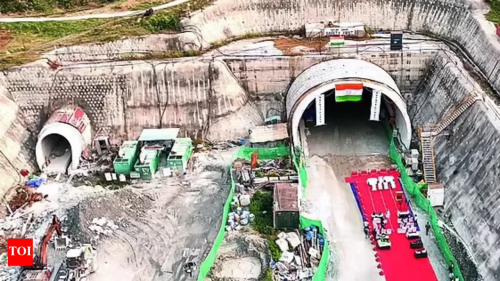India has achieved a significant engineering milestone with the completion of the country’s longest rail tunnel, a crucial component of the ambitious Rishikesh–Karnaprayag rail route. The tunnel, stretching for over 10 kilometers, marks a major step forward in connecting the challenging Himalayan terrain and is expected to revolutionize travel and tourism in Uttarakhand.
A New Vein for the Himalayas
The completed tunnel is part of the larger Char Dham connectivity project, which aims to provide seamless rail access to the four sacred pilgrimage sites in the Himalayas. The completion of this specific, record-breaking tunnel is a victory of engineering over geography:
Length Record: At over 10 km, it surpasses all existing operational rail tunnels in India
Operational Timeline: The entire section, including this tunnel, is expected to become operational as early as December 2026.
Route Impact: It is a vital artery on the Rishikesh–Karnaprayag rail line, which will drastically reduce travel time between the plains and the high-altitude regions of Uttarakhand.
Boosting Tourism and Connectivity
The rail line and its tunnels are being constructed through some of the most geologically challenging and sensitive terrain in the world. The engineering feat involved complex planning to ensure stability and safety in the seismically active Himalayan region.
Once operational, the route is set to be a game-changer for the state:
Time Reduction: It will significantly cut down travel time for both pilgrims and tourists heading into the interior parts of Uttarakhand.
Economic Impact: Improved connectivity is anticipated to boost tourism, create employment, and accelerate economic development in remote mountain communities.
The completion of this tunnel highlights India’s commitment to building world-class infrastructure that overcomes natural barriers to serve national development goals.







